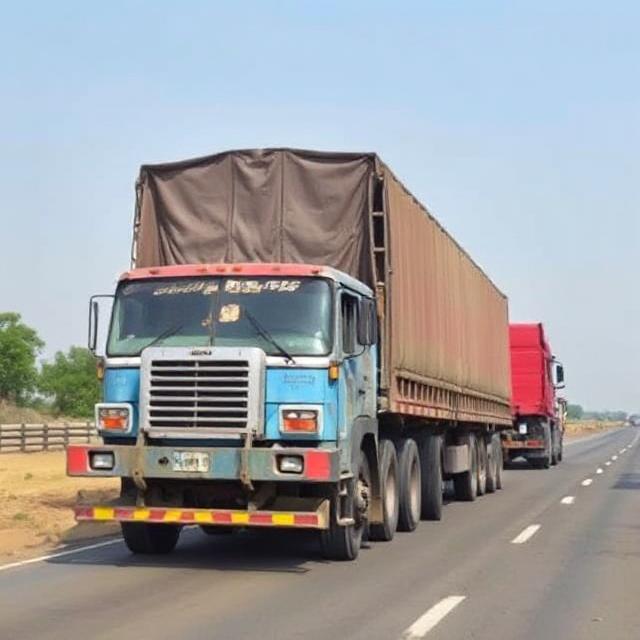Learn about India’s truck overloading rules, legal axle load limits, and penalties for violations. Stay compliant and avoid fines with this essential guide for fleet operators and drivers.
Truck Overloading Rules and Weight Limits in India
Truck overloading is a widespread issue in India that not only damages roads and vehicles but also poses serious safety risks. To address this, the government has laid down clear rules regarding maximum permissible weights for commercial vehicles under the Central Motor Vehicle Rules (CMVR) and the Motor Vehicles Act (MVA).
In this blog, we’ll explain:
- Legal weight and axle load limits
- Recent regulatory changes
- Overloading penalties
- Why compliance matters for your business
🚛 What Is Overloading in Trucking?
Overloading occurs when a truck carries more weight than the Gross Vehicle Weight (GVW) allowed by law. This includes cargo, fuel, driver, and the truck’s own weight.
Consequences include:
- Reduced vehicle lifespan
- Higher accident risks
- Damage to road infrastructure
- Increased fuel consumption and emissions
📏 Legal Truck Weight and Axle Load Limits in India
The legal limits depend on:
- Vehicle type (e.g., 2-axle, 3-axle, multi-axle)
- Number of tires per axle
- Load rating of each axle
🔹 Axle Load Limits (as per Ministry of Road Transport & Highways – MoRTH):
| Axle Type | Maximum Load (kg) |
|---|---|
| Single axle (2 tires) | 6,000 kg |
| Single axle (4 tires) | 10,200 kg |
| Tandem axle (8 tires) | 19,000–21,000 kg |
| Triple axle (12 tires) | 27,000–30,000 kg |
| Trailers (depending on configuration) | Up to 49,000+ kg |
🛠 Note: Actual permissible weight varies by configuration and should match the manufacturer’s specifications and RC (Registration Certificate).
📜 Recent Rule Changes (2018 Amendment)
In July 2018, the Indian government increased permissible axle loads by up to 20–25% for various categories of trucks:
- Objective: Increase efficiency and reduce logistics costs.
- Impact: Older vehicles can operate with higher loads, but new manufacturing standards apply.
However, older trucks registered before this notification must continue to operate under earlier weight limits.
⚖️ Penalties for Overloading
Under the amended Motor Vehicles Act (2019):
- Fine: ₹20,000 + ₹2,000 per extra ton
- Driver’s License Suspension: Possible for repeat violations
- Detainment: Authorities may detain overloaded vehicles until rectified
💡 Enforcement is done through weighbridges, mobile inspection units, and toll plaza sensors.
🚧 Why Compliance Matters
Ignoring load limits is costly — legally and financially. Here’s why compliance should be a top priority:
✅ 1. Safety First
Overloaded trucks take longer to brake, increase accident risk, and compromise control.
✅ 2. Avoid Heavy Fines
Non-compliance can lead to huge penalties and operational downtime.
✅ 3. Protect Vehicle Health
Overloading accelerates wear and tear, leading to more breakdowns and higher maintenance costs.
✅ 4. Ensure Smooth Operations
Legal violations can delay shipments, harm customer trust, and result in blacklisting from contracts.
📝 Best Practices for Fleet Operators
- Use on-board weighing systems to monitor load
- Train drivers and loaders about permissible limits
- Regularly inspect and calibrate weighbridges
- Stay updated with MoRTH and RTO regulations
- Maintain accurate RC and vehicle specs for enforcement checks
🚚 Conclusion
Overloading may seem profitable in the short term, but the long-term risks far outweigh the gains. Staying within legal weight limits ensures safety, sustainability, and compliance in India’s evolving transport ecosystem.
Target Keywords:
- truck overloading rules India
- legal axle load limits
- commercial vehicle weight limits India
- overloading fines India
- vehicle GVW norms
- truck weight compliance India
- MVA overloading penalties

